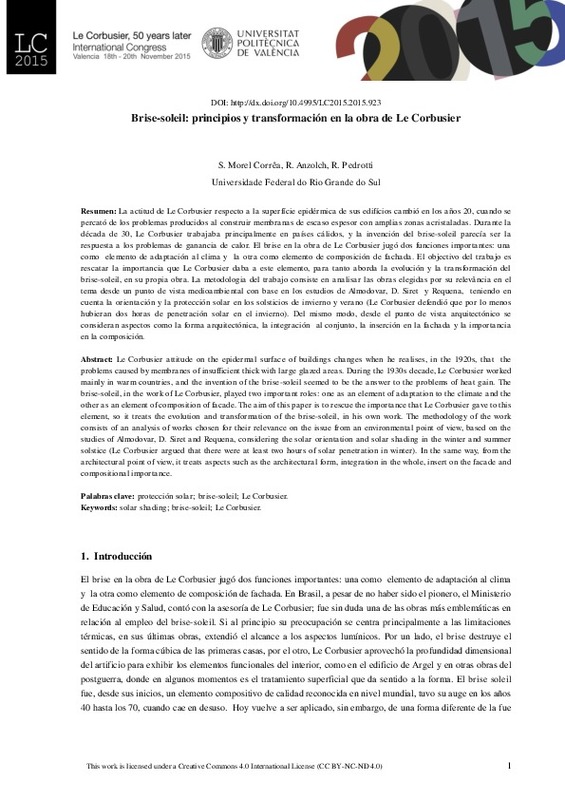JavaScript is disabled for your browser. Some features of this site may not work without it.
Buscar en RiuNet
Listar
Mi cuenta
Estadísticas
Ayuda RiuNet
Admin. UPV
Brise-soleil: principios y transformación en la obra de Le Corbusier
Mostrar el registro completo del ítem
Morel Correa, S.; Anzolch, R.; Pedrotti, R. (2016). Brise-soleil: principios y transformación en la obra de Le Corbusier. En LE CORBUSIER. 50 AÑOS DESPUÉS. Editorial Universitat Politècnica de València. 1485-1505. https://doi.org/10.4995/LC2015.2015.923
Por favor, use este identificador para citar o enlazar este ítem: http://hdl.handle.net/10251/87428
Ficheros en el ítem
Metadatos del ítem
| Título: | Brise-soleil: principios y transformación en la obra de Le Corbusier | |
| Autor: | Morel Correa, Silvia Anzolch, Roni Pedrotti, Renato | |
| Fecha difusión: |
|
|
| Resumen: |
[EN] Le Corbusier attitude on the epidermal surface of buildings changes when he realises, in the 1920s, that the
problems caused by membranes of insufficient thick with large glazed areas. During the 1930s decade, Le ...[+]
[ES] La actitud de Le Corbusier respecto a la superfície epidérmica de sus edifícios cambió en los años 20, cuando se
percató de los problemas producidos al construir membranas de escaso espesor con amplias zonas acristaladas. ...[+]
|
|
| Palabras clave: |
|
|
| Derechos de uso: | Reconocimiento - No comercial - Sin obra derivada (by-nc-nd) | |
| ISBN: |
|
|
| Fuente: |
|
|
| DOI: |
|
|
| Editorial: |
|
|
| Versión del editor: | http://ocs.editorial.upv.es/index.php/LC2015/LC2015/paper/view/923 | |
| Título del congreso: |
|
|
| Lugar del congreso: |
|
|
| Fecha congreso: |
|
|
| Tipo: |
|








